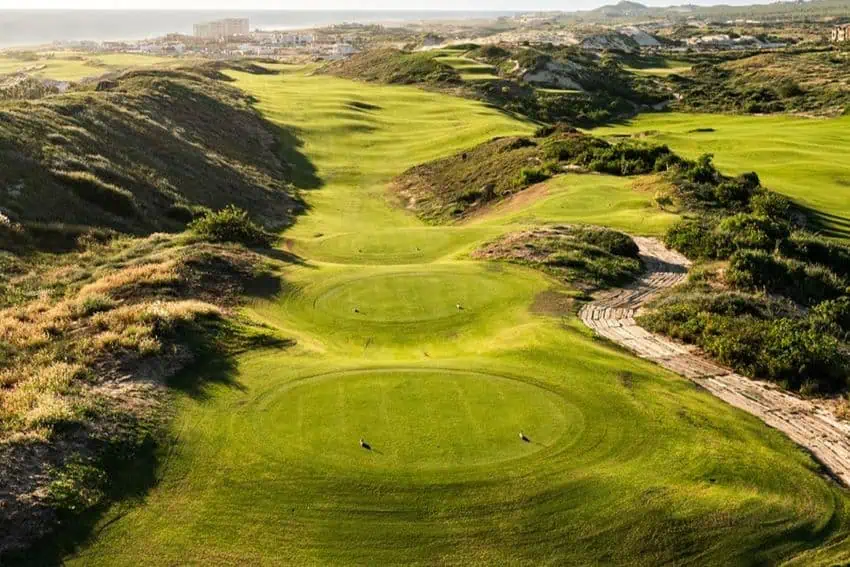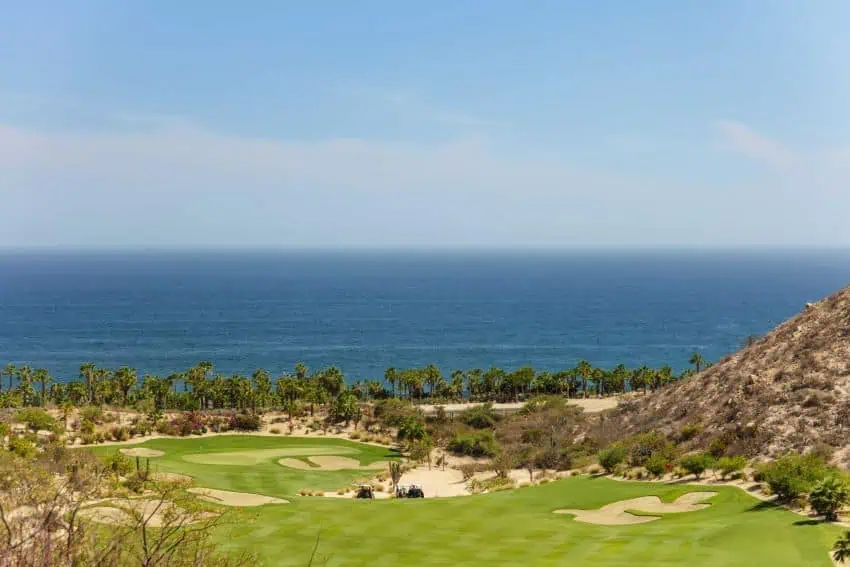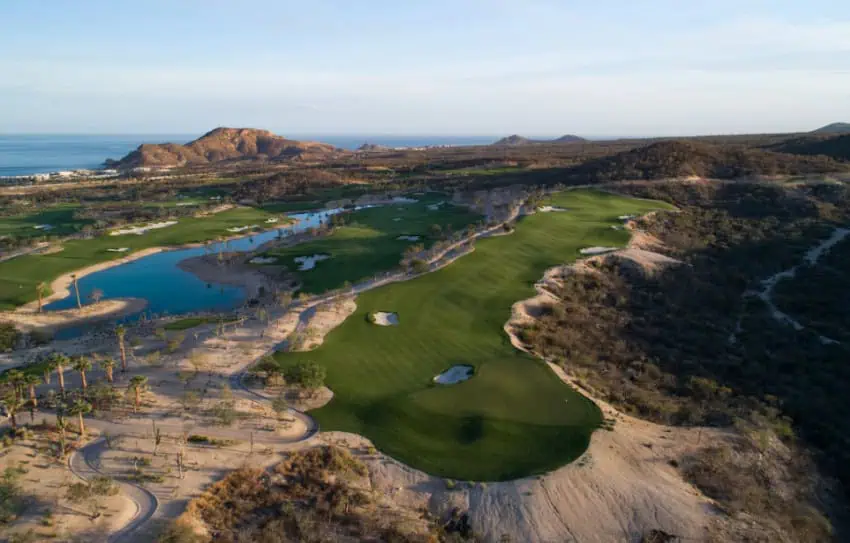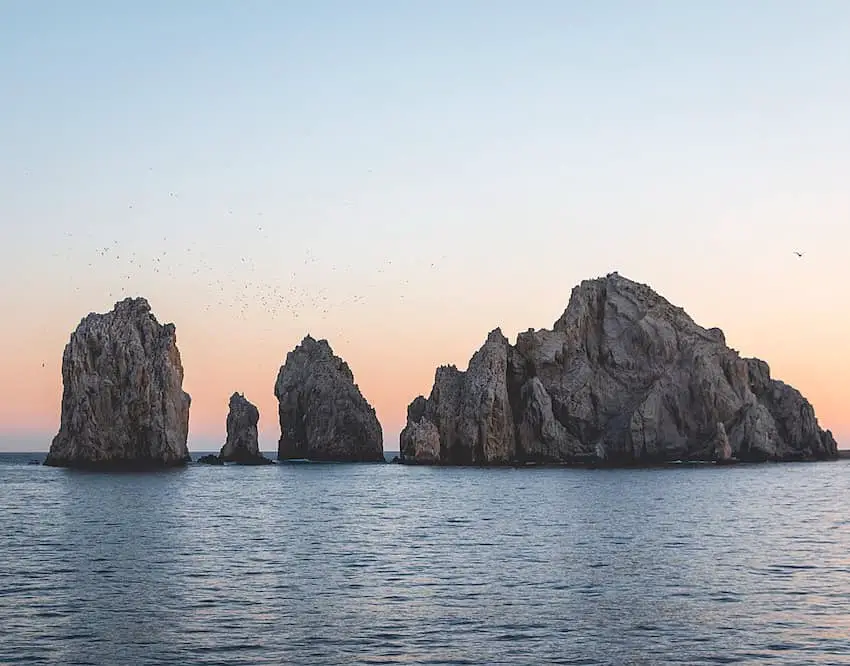Los Cabos does not have the most golf courses per capita. That honor belongs to Scotland, the ancestral home of the game, where there’s one course for every 9,800 residents.
However, Los Cabos is quickly making up ground, with 18 courses currently in use and five more in development. That means that within the next year or two, Los Cabos will have 23 courses for about 350,000 residents, or one golf course for every 15,200 residents. Among these, it should be noted, are some of the finest golf courses in the world, challenging loops with spectacular ocean, desert and mountain vistas.
Los Cabos is not a traditional golf course mecca

As a lifelong golfer, there’s a part of this bounty that makes me very happy. But as we all learn as children, usually after stuffing ourselves full of chocolate, too much of a good thing is a concept with very real applications.
Los Cabos is not Scotland. For starters, despite the preponderance of ocean views, we’re in a desert and have very little water. Golf courses, famously, require lots of water. So it’s a very questionable use of a shrinking and extremely valuable resource.
Secondly, in Scotland, residents grow up playing the game and for the most part, have affordable access to their local links. In Los Cabos, where most courses now charge more than US $400 per round, few residents can afford to play, even if they were welcome, which they mostly are not, since so many of these courses are private.
Why does Los Cabos have so many courses in the first place?
Why would communities in a desert environment build so many courses that so many of their residents largely can’t afford to play, even if they were welcome? The answer is real estate.

Golf helps to sell real estate. Barron’s explains it thusly: “In the golf real estate realm, developers build courses to sell houses. They hire big-name designers like Jack Nicklaus, Coore and Crenshaw, or Robert Trent Jones Jr. to lend star power to create an impressive 18 holes, confident the chance to play such a layout every day will draw buyers willing to pay millions for a second home or vacation escape.”
If these vacation homeowners ever tire of their local course and want to sell, they can rest easy in the knowledge that golf courses also help to boost property values, increasing their value by 8% to 12%, on average.
How much is too much?
Not all the golf courses in Los Cabos were originally built to sell real estate. Some were also intended as amenities for vacationers at local resorts. But all of the new courses being built now are selling points for real estate developments.
Now if there’s one thing that is obvious to any Los Cabos resident at this point, it’s that the population is only going to continue to rise. Does that mean even more golf courses? It almost certainly does, which leads to an inevitable question: how much is too much?

Especially given the looming water crisis in Los Cabos, since the area’s aquifers are unable to recharge fast enough to provide water for its ever-increasing population and are operating at a deficit. Yes, there’s another water desalination plant coming, but if you’re familiar with the one we already have, you know you can’t always count on it.
As noted in a previous article on this topic, each course in Los Cabos uses enough water daily on average — over 600,000 gallons — to provide for the water needs of 8,000 residents. By the way, the authors of the study quoted for that figure, “A critical geography approach to land and water use in the tourist economy in Los Cabos, Baja California Sur, Mexico,” offered what appears to be a conservative estimate. Golf courses in Palm Springs, to give another desert golf example, are estimated to use 800,000 gallons of water per day.
In any case, and even allowing for the courses that are making good faith efforts to operate sustainably, it’s a lot, and the idea of even more courses being built seems unwise in a place where water is such an ongoing issue. Even the amount of golf courses we already have seems too many, and I say that as someone who loves golf.
Also, how much of the area’s best real estate is going to be set aside for such a small percentage of the population? Because that’s the other part of the equation.
Who are these courses for, anyway?
As the vast majority of locals can’t afford to play these courses and aren’t welcome anyway, it’s also worth revisiting the question of who these courses are being built for. They’re being built for people buying vacation homes, which means for most of every year, they don’t even live here.

The sore subject of selling Los Cabos’ resources to non-residents is not a new one. This is a vacation destination that draws about 4 million visitors annually. To provide the beach atmosphere that these visitors love to frolic in, Los Cabos resorts have long tried to impede access to these golden sandy stretches to locals, even though by federal law all Mexican beaches are public property.
In that case, as with its ever-growing collection of golf courses, prime Los Cabos real estate along the municipality’s glorious coastline is being prioritized for short-term visitors or seasonal residents: meaning, tourists and vacation homeowners. If you’re a local, you can go ahead and be offended by this, but if you’re a long-term local, one thing you cannot be is surprised. Because this is not even remotely new.
What does responsible golf in Los Cabos look like?
However, just because this is the model and has been for a long time doesn’t mean it can’t ever change. Los Cabos cannot keep its head in its treasured and hard-to-get-to sand over water issues forever, nor can it continue to ignore the needs of the people who live here not part of the time but all of the time.
This means it might be nice to provide access and affordable golf options to locals if that’s where all our water is going. But it also means that’s probably not where so much of our dwindling water supply should be going. Just saying.
Chris Sands is the Cabo San Lucas local expert for the USA Today travel website 10 Best, writer of Fodor’s Los Cabos travel guidebook and a contributor to numerous websites and publications, including Tasting Table, Marriott Bonvoy Traveler, Forbes Travel Guide, Porthole Cruise, Cabo Living and Mexico News Daily. His specialty is travel-related content and lifestyle features focused on food, wine and golf.
